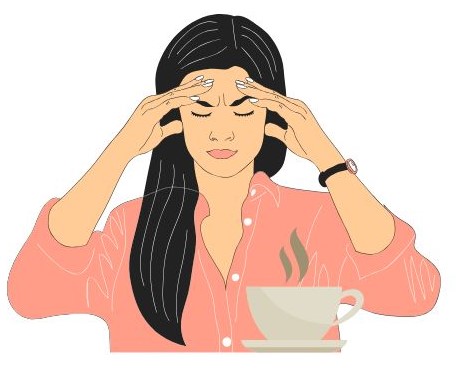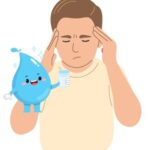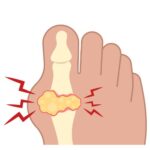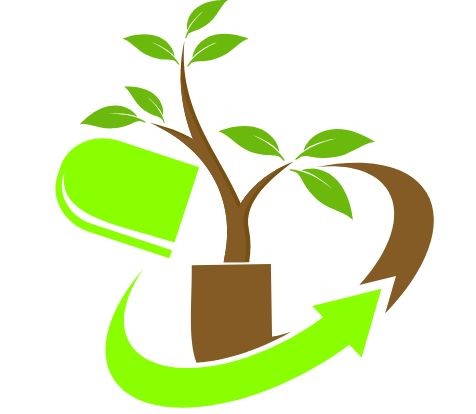Migraines are a prevalent and often debilitating neurological condition that affects millions of people worldwide. Characterized by intense, pulsating headaches, migraines can be accompanied by a range of symptoms, including nausea, vomiting, and heightened sensitivity to light and sound. For many individuals, managing migraines involves a multifaceted approach that includes lifestyle modifications, dietary considerations, and medication. Among these factors, caffeine plays a unique and sometimes controversial role.
Caffeine is one of the most commonly consumed psychoactive substances globally, found in coffee, tea, energy drinks, and soft drinks. While it is renowned for its ability to boost energy and enhance focus, its effects on migraine sufferers can be complex. For some, caffeine may serve as a powerful ally in alleviating headache symptoms, providing quick relief when taken in moderation. However, for others, it can act as a trigger, potentially leading to more frequent and severe migraine episodes.
This duality makes caffeine a double-edged sword in the realm of headache management. Understanding how caffeine interacts with the body, particularly in relation to migraines, is essential for individuals seeking effective strategies for relief. This article will explore the benefits and risks associated with caffeine consumption, provide guidelines for safe intake, and help you navigate your personal relationship with this popular stimulant. By doing so, we aim to empower you with the knowledge needed to make informed decisions about caffeine and its role in your migraine management plan.
Understanding Caffeine and Its Effects on Migraine
Caffeine is a central nervous system stimulant that is most commonly found in coffee, tea, chocolate, and various soft drinks and energy drinks. Its popularity stems from its ability to enhance alertness, improve concentration, and reduce fatigue. However, the biochemical effects of caffeine are complex and can vary significantly among individuals, especially those who suffer from migraines.
Mechanism of Action
- Adenosine Receptor Blockade:
- Caffeine primarily works by blocking adenosine receptors in the brain. Adenosine is a neurotransmitter that promotes sleep and relaxation; when its action is inhibited, it can lead to increased alertness and wakefulness.
- In migraine sufferers, the modulation of adenosine may have both positive and negative effects, influencing headache occurrence and severity.
- Vasoconstriction:
- Caffeine has a vasoconstrictive effect, meaning it can cause blood vessels to narrow. This is significant because migraines are often associated with vasodilation (the widening of blood vessels).
- By counteracting vasodilation, caffeine may help alleviate headache pain during an active migraine.
- Pain Relief Synergy:
- Caffeine enhances the efficacy of common pain relievers like aspirin and acetaminophen. This synergy means that caffeine can amplify the effects of these medications, providing faster and more effective relief for headache pain.
The Biphasic Nature of Caffeine
Caffeine exhibits a biphasic effect, meaning that its impact can vary based on the dose and the individual’s habitual consumption:
- Low to Moderate Doses:
- For many people, consuming low to moderate amounts of caffeine (about 100-200 mg) can provide beneficial effects, including enhanced mood, increased focus, and relief from headaches.
- This dosage can also be effective in preventing headaches, especially for individuals who regularly consume caffeine and have developed a tolerance.
- High Doses:
- High doses of caffeine (above 400 mg) can lead to adverse effects, including increased anxiety, restlessness, insomnia, and even triggering headaches in susceptible individuals.
- Excessive caffeine intake can also lead to dependency, where the body becomes accustomed to its effects, and withdrawal symptoms—including headaches—can occur if consumption is suddenly reduced.
Individual Differences in Caffeine Response
- Genetic Variability:
- Genetic factors play a significant role in how individuals metabolize caffeine. Some people have variations in genes related to caffeine metabolism, leading to differences in sensitivity and tolerance.
- Fast metabolizers may experience less intense effects from caffeine, while slow metabolizers may be more prone to its adverse effects, including headaches.
- Habitual Use:
- Regular caffeine consumers may develop a tolerance, requiring more caffeine to achieve the same effects. In contrast, occasional users may be more sensitive to its effects, experiencing stronger responses to even small amounts.
- Hormonal Influences:
- Hormonal fluctuations, particularly in women, can also affect how caffeine impacts migraine frequency and intensity. Some studies suggest that caffeine’s effects may vary depending on the menstrual cycle, potentially influencing headache patterns.
Caffeine and Migraine Triggers
Understanding the potential triggers associated with caffeine consumption is essential for migraine management:
- Trigger vs. Relief: For some individuals, caffeine may trigger migraines if consumed in excessive amounts or inconsistently. For others, a small amount of caffeine can alleviate pain when a migraine strikes.
- Withdrawal Headaches: Individuals who consume caffeine regularly may experience withdrawal headaches if they miss their usual intake, leading to a cycle of dependency and pain.
Conclusion
Caffeine’s role in migraine management is multifaceted and influenced by various factors, including individual tolerance, genetic predisposition, and habitual consumption patterns. While it can provide effective relief for some, it can also trigger headaches for others. Understanding these dynamics is crucial for migraine sufferers looking to harness caffeine’s potential benefits while minimizing risks. By staying informed and aware of personal triggers, individuals can make better choices regarding their caffeine consumption and its impact on their migraine management strategies.
The Dual Nature of Caffeine in Migraine Management
Benefits of Caffeine for Migraines
- Immediate Relief: For those who regularly consume caffeine, a small amount during a migraine attack can provide quick relief. It’s essential to consume it early in the migraine phase for the best results.
- Preventive Measures: Some studies suggest that habitual caffeine consumption may lower the frequency of migraines for certain individuals. Regular caffeine users might experience fewer migraine days, although this is not universally applicable.
- Mood Enhancement: Caffeine can improve mood and cognitive function, which may help individuals cope better during a migraine attack.
Risks of Caffeine for Migraines
- Triggering Attacks: For some migraine sufferers, caffeine can be a trigger. High doses or sudden increases in caffeine intake may lead to migraine onset.
- Withdrawal Headaches: Reducing or eliminating caffeine intake after habitual use can lead to withdrawal headaches, which can mimic migraine symptoms and may last several days.
- Sleep Disruption: Excessive caffeine consumption can disrupt sleep patterns, leading to fatigue and stress—both known migraine triggers.
Guidelines for Caffeine Consumption
1. Know Your Limits
Understanding your individual tolerance for caffeine is crucial. For some, as little as 100 mg (approximately one cup of coffee) can trigger a migraine, while others may tolerate much higher amounts. Keep a headache diary to track your caffeine consumption and its correlation with migraine frequency.
2. Moderate Intake
Moderation is key. The general recommendation for caffeine consumption is about 200-400 mg per day for most adults, but this may vary based on individual sensitivity. Avoid consuming caffeine in excess, especially close to bedtime, to minimize the risk of withdrawal headaches and sleep disruption.
3. Choose Wisely
Opt for beverages that provide a moderate amount of caffeine without excessive additives or sugar. Consider:
- Coffee: Brewed coffee typically contains 95 mg of caffeine per 8-ounce cup.
- Tea: Black tea contains about 40-70 mg per cup, while green tea has around 20-45 mg.
- Dark Chocolate: A 1-ounce serving can contain 20-30 mg of caffeine, providing a small boost along with antioxidants.
4. Stay Hydrated
Caffeine is a diuretic, meaning it can lead to increased fluid loss. Ensure you stay well-hydrated by drinking plenty of water alongside caffeinated beverages to prevent dehydration, which is another common migraine trigger.
5. Monitor Changes
If you’re considering adjusting your caffeine intake—either increasing or decreasing it—do so gradually. Sudden changes can lead to withdrawal headaches or increased migraine frequency.

Caffeinated beverages can be both a friend and foe for individuals prone to migraines. While caffeine can offer quick relief and even act as a preventive measure for some, it can also trigger attacks and lead to withdrawal headaches for others. Understanding your personal relationship with caffeine is vital in managing migraines effectively. By moderating intake, monitoring your body’s responses, and choosing beverages wisely, you can navigate the fine line between benefit and risk, harnessing the potential of caffeine to support your migraine management strategy. Always consult with a healthcare professional to tailor an approach that suits your individual needs and circumstances.







